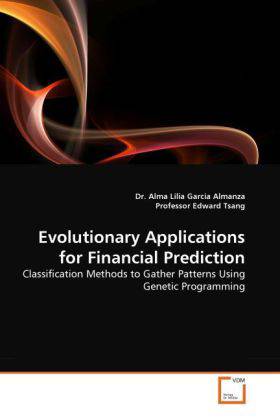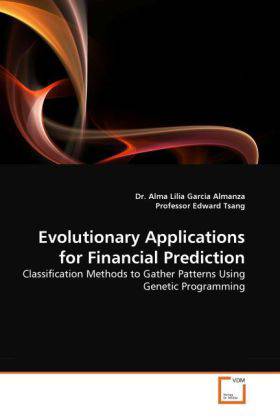
Door een staking bij bpost kan je online bestelling op dit moment iets langer onderweg zijn dan voorzien. Dringend iets nodig? Onze winkels ontvangen jou met open armen!
- Afhalen na 1 uur in een winkel met voorraad
- Gratis thuislevering in België vanaf € 30
- Ruim aanbod met 7 miljoen producten
Door een staking bij bpost kan je online bestelling op dit moment iets langer onderweg zijn dan voorzien. Dringend iets nodig? Onze winkels ontvangen jou met open armen!
- Afhalen na 1 uur in een winkel met voorraad
- Gratis thuislevering in België vanaf € 30
- Ruim aanbod met 7 miljoen producten
Zoeken
Evolutionary Applications for Financial Prediction
Alma Lilia Garcia Almanza, Edward Tsang
Paperback | Engels
€ 67,45
+ 134 punten
Omschrijving
This book presents three applications, based on Machine Learning and Genetic Programming, which are devoted to find useful patterns to predict future events. The objective is to train the algorithms by using past data to produce a classifier that identifies the positive cases and discriminates the false alarms. This work uses examples for predicting future opportunities in financial stock markets in cases where the number of profitable opportunities is scarce. However, when the number of positive examples is small in comparison with the number of total cases, the identification of useful patterns becomes a serious challenge. Nevertheless, the objective of many real world problems, is precisely to identify the minority class as the fraud detection problem, or medical diagnosis and many other examples. The techniques of this book are suitable to deal with imbalanced data sets, provide comprehensible results that allow users to understand the factors that are involved in the decision, as well as to generate a range of solutions that let the user choose the best trade off according to their risk preferences.
Specificaties
Betrokkenen
- Auteur(s):
- Uitgeverij:
Inhoud
- Aantal bladzijden:
- 172
- Taal:
- Engels
Eigenschappen
- Productcode (EAN):
- 9783639307672
- Verschijningsdatum:
- 4/02/2011
- Uitvoering:
- Paperback
- Formaat:
- Trade paperback (VS)
- Afmetingen:
- 152 mm x 229 mm
- Gewicht:
- 258 g

Alleen bij Standaard Boekhandel
+ 134 punten op je klantenkaart van Standaard Boekhandel
Beoordelingen
We publiceren alleen reviews die voldoen aan de voorwaarden voor reviews. Bekijk onze voorwaarden voor reviews.











